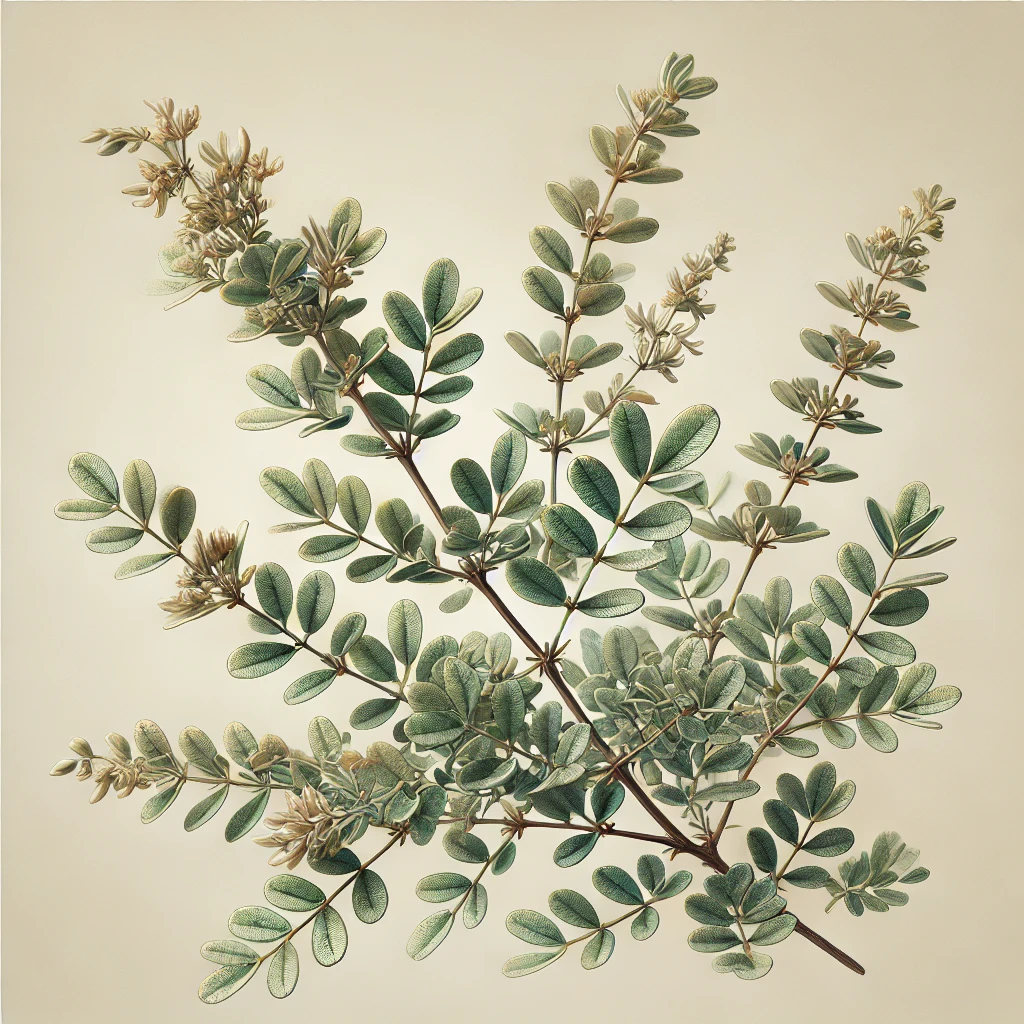A sprawling dioecious shrub up to 1.5 m tall, with thin, rod-like, straight, light yellow shoots and gray bark on older branches. The leaves are small, glabrous, and back-elliptical, with small leathery stipules. The flowers are unisexual, small, and inconspicuous, greenish. Staminate flowers are clustered in groups of 3–12 on short pedicels; there are 5 concave, oval sepals, no petals, and 5–6 stamens protruding from the calyx; the rudimentary ovary is usually divided into three parts. Pistillate flowers are solitary or in small groups (3–8), on longer (up to 1 cm) pedicels; the ovary is spherical, with 3 styles. The fruit is a drooping, three-celled capsule, flattened at the top, with 2 seeds in each cell. The seeds are smooth, bluntly triangular, with a thin seed coat. It flowers in June–July and fruits in September.
It grows singly or in small groups on rocky slopes and sandy-gravel deposits, and less frequently on forest edges. It is found primarily in the Far East along the Amur River and its tributaries, and as far west as Nerchinsk.
The raw material is collected by breaking off the leafy tops of the stems and branches from the budding to fruit ripening stages, from June to September. The plant contains alkaloids: 0.3–0.8% in the leaves, 0.2% in the upper stems; there are significantly fewer alkaloids in the fruits. The main alkaloid isolated is sekurinin.
According to literature, sekurinega suffruticosa contains suffruticodine, suffruticonine, allosekurinin, dihydrosekurinin, and sekurinol, while a Japanese variety contains virosekurin. The roots of plants from India mainly contain allosekurinin. Related species of this genus contain gordenine (flugrin), viroallosekurinin, and virosine. The alkaloid composition and their relative amounts in various forms and varieties of sekurinega suffruticosa vary greatly depending on geographic conditions and the developmental phase.
Nitric acid sekurinin is used both internally and subcutaneously as a stimulant for the nervous system. It acts similarly to strychnine but is weaker and less toxic.
It is used as a tonic in asthenic conditions, neurasthenia with rapid fatigue, hypotension, paresis, flaccid paralysis, and sexual weakness caused by nervous system dysfunction.
Excessive doses of sekurinin can lead to poisoning similar to strychnine poisoning. In such cases, swallowing becomes difficult, and painful tension in facial, occipital, and other muscles occurs, leading to convulsive muscle contractions of all skeletal muscles.
The dosage is usually 0.002 g in tablet form twice a day or a 0.4% solution (in bottles) — 10–20 drops twice a day, or a 0.2% solution (in ampoules) — 1 ml once a day subcutaneously. The treatment course lasts 30–35 days.
ANACARDIACEAE FAMILY
Trees or shrubs, rarely herbs. Leaves are typically alternate, simple or compound. Flowers are regular, with separate petals, small, in panicle inflorescences; there are 5–10 stamens and a superior ovary. The fruit is a drupe or nut.
Members of this family are rare in the USSR, mainly growing in southern regions.
Many species are rich in tannins and tannic acid, and often contain resins and essential oils found in resin ducts in the phloem of the trunk and along the leaf veins.
In the USSR, the following three genera belong to this family: Pistacia, Cotinus, Rhus. All are of medicinal importance as tanning agents.

